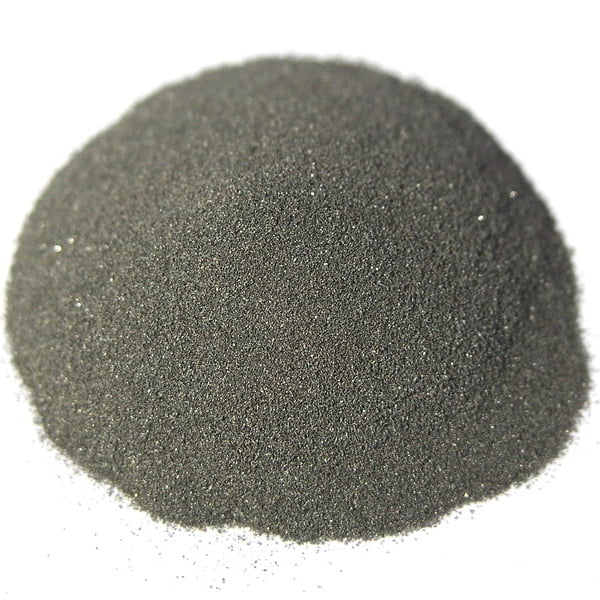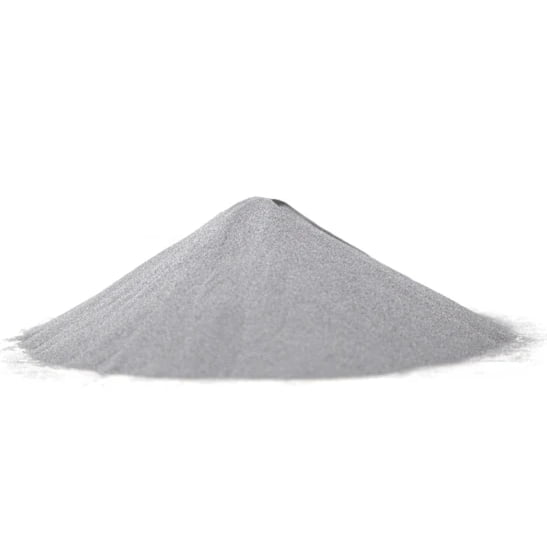Imagine a world where materials are manipulated at the most fundamental level, transformed into tiny, uniform particles that unlock a universe of possibilities. This isn’t science fiction; it’s the reality of atomization technology. But what exactly is atomization, and how is it revolutionizing countless industries? Buckle up, because we’re about to delve into the fascinating world of breaking things down to build a lighter, stronger, and more efficient future.
The Principle of 霧化技術
At its core, atomization is the process of breaking down a liquid or molten material into very fine droplets or particles. Think of it like taking a lump of clay and turning it into a pile of tiny, individual pebbles. There are several ways to achieve this, but the most common methods involve using high pressure, ultrasonic sound waves, or even superheated plasma.
Here’s a quick breakdown of the main atomization techniques:
- Hydraulic Atomization: Imagine a garden hose with a powerful nozzle. That’s the basic idea behind hydraulic atomization. By forcing a liquid through a small orifice at high pressure, it gets sheared and broken up into tiny droplets. This method is simple and cost-effective, making it ideal for applications like paint spraying and fuel injection.
- Pneumatic Atomization: This method introduces a gas, like compressed air, to break up the liquid. Picture a child blowing bubbles – the air stream creates a thin film of liquid that then breaks into smaller droplets. Pneumatic atomization is commonly used in applications like spray painting and insecticide fogging.
- Rotary Atomization: This technique uses a high-speed spinning disc to break up the liquid. Think of a pizza dough being tossed in the air – the centrifugal force stretches and tears the liquid into fine droplets. Rotary atomization is well-suited for creating very fine and uniform particles, used in applications like pharmaceutical powders and metal alloys.
- Ultrasonic Atomization: Ever heard of a dog whistle? It uses high-frequency sound waves that humans can’t hear. Ultrasonic atomization works similarly, but instead of sound waves controlling a dog’s behavior, they’re used to create microscopic vibrations in the liquid, causing it to break up into a fine mist. This method is ideal for applications requiring precise control over droplet size, such as medical nebulizers and humidifiers.
- プラズマ霧化: This is the heavy hitter of atomization techniques. It uses superheated plasma, a state of matter even hotter than a star’s surface, to melt and atomize materials. Imagine throwing a marshmallow into a blazing inferno – that’s kind of what happens, except instead of gooey sweetness, you get high-purity, high-performance metal powders. Plasma atomization is used to create exotic alloys and materials for aerospace, medical implants, and other demanding applications.

The Benefits of Being Small
So why all this fuss about breaking things down into tiny particles? Well, it turns out there’s a lot of power in smallness. Here are just a few benefits of atomization technology:
- Increased Surface Area: When a material is atomized, its surface area explodes. Imagine a tennis ball versus a pile of table tennis balls. The smaller particles have a much larger collective surface area, which can be hugely beneficial in applications like catalysis (where reactions happen on surfaces) or drug delivery (where the amount of drug absorbed depends on its surface area).
- Enhanced Material Properties: By controlling the size and shape of atomized particles, scientists can engineer materials with specific properties. For instance, finer metallic powders can create lighter, stronger alloys for aircraft components.
- Improved Processing Efficiency: Atomized materials are often easier to work with than their bulk counterparts. For example, finer powders can be mixed more uniformly into composites, leading to better performance and reduced waste.
- Novel Applications: Atomization technology has opened doors to entirely new applications. For instance, atomized metal powders are used in 3D printing, allowing for the creation of complex and lightweight structures.
The Applications of Atomization Technology
The applications of atomization technology are as diverse as the materials it can handle. Here are just a few examples:
- Food & Agriculture: Food atomization is used to create powdered milk, instant coffee, and even flavorings and colorings for processed foods. In agriculture, atomization helps deliver pesticides, herbicides, and fertilizers more efficiently.
- Pharmaceuticals: Atomization is crucial for creating drug delivery systems. By controlling the size and properties of drug particles, scientists can ensure they are absorbed effectively by the body.
- Coatings & Paints: Paint spraying and other coating applications rely heavily on atomization to create a smooth, uniform finish.
- Cosmetics: Many cosmetic products, such as makeup powders and sunscreens, use atomized particles to achieve a lightweight, blendable texture.
- エネルギーだ: Atomized fuels, like powdered coal, can improve combustion efficiency in power plants. Additionally, metal powders created through atomization are used in fuel cell technologies and next-generation batteries.
- 建設: Atomization plays a role in creating lightweight building materials like aerated concrete and self-compacting concretes.
- 航空宇宙: The aerospace industry heavily relies on atomization for producing high-performance metal alloys used in aircraft components, rocket engines, and spacecraft.
Beyond the Ordinary: Pushing the Boundaries with Atomization
While the applications mentioned above showcase the versatility of atomization, the technology is constantly evolving, pushing the boundaries of what’s possible. Here are a few exciting areas of development:
- Nanoparticles: By further miniaturizing atomized particles into the nanoscale (think billionths of a meter!), scientists are creating new materials with unique properties. Imagine clothing that repels dirt and stains or self-healing paints that fix scratches automatically. Nanoparticles hold immense potential for advancements in medicine, electronics, and energy technologies.
- バイオプリンティング: This emerging field utilizes atomization techniques to create three-dimensional structures from biocompatible materials like human cells. Imagine printing replacement tissues or even entire organs for transplantation! While still in its early stages, bioprinting has the potential to revolutionize healthcare.
- Food Customization: Atomization could pave the way for personalized nutrition. By precisely controlling the ingredients and their proportions in a powdered form, individuals could create customized food mixes tailored to their specific dietary needs and preferences.






The Future Development of 霧化技術
The future of atomization technology is brimming with possibilities. As researchers continue to refine existing techniques and explore new frontiers, we can expect even more innovative applications to emerge. Here are some key trends to watch:
- 持続可能な製造業 Atomization can contribute to a more sustainable future by reducing waste and improving material efficiency. For example, finer powders can be used more effectively, leading to less material being wasted during production processes. Additionally, atomization can enable the use of recycled materials in new ways.
- Advanced Materials Design: The ability to precisely control the size, shape, and composition of atomized particles will unlock a new era of material design. Imagine materials with tailored properties for specific applications, leading to lighter, stronger, and more energy-efficient products.
- 他のテクノロジーとの統合: Atomization will likely become even more integrated with other advanced technologies, such as 3D printing and artificial intelligence. This convergence could lead to the creation of entirely new manufacturing processes and products.
Challenges and Considerations: No Silver Bullet
Despite its immense potential, atomization technology also presents some challenges that need to be addressed:
- エネルギー消費: Some atomization processes, particularly those involving high pressure or plasma, can be energy-intensive. As we move forward, there’s a need to develop more energy-efficient atomization techniques.
- 環境への影響: The production of some atomized materials can generate dust and other pollutants. Implementing proper filtration systems and waste management practices is crucial to minimize the environmental impact of atomization.
- 安全性への配慮: Working with certain materials, especially at high temperatures or in a powdered form, can pose safety risks. It’s essential to have proper safety protocols in place to protect workers and the environment.
Conclusion: A World Transformed, One Tiny Particle at a Time
Atomization technology is silently transforming the world around us, from the products we use every day to the cutting-edge advancements shaping our future. By breaking down materials into their fundamental building blocks, we’re unlocking a universe of possibilities. As we continue to refine and explore this technology, we can look forward to a future filled with lighter, stronger, more efficient, and even life-saving applications. The power of small might just be the key to building a brighter tomorrow.

FAQ
Q: What are the different types of atomization?
A: There are several types of atomization, each with its own advantages and disadvantages. Here’s a quick breakdown:
| Type of Atomization | 説明 | 利点 | 欠点 |
|---|---|---|---|
| Hydraulic | Uses high pressure to break up liquids | Simple, cost-effective | Limited control over droplet size |
| Pneumatic | Uses compressed air to break up liquids | 多用途 | Larger droplet size compared to other methods |
| Rotary | Uses a high-speed spinning disc to break up liquids | Creates very fine and uniform particles | More complex setup compared to other methods |
| Ultrasonic | Uses high-frequency sound waves to break up liquids | Precise control over droplet size | Lower energy efficiency compared to some methods |
| プラズマ | Uses superheated plasma to melt and atomize materials | Creates high-purity, high-performance powders | High energy consumption, complex setup |
Q: What are some of the benefits of atomization technology?
A: Atomization technology offers a range of benefits, including:
- Increased surface area: Smaller particles have a much larger collective surface area, which can be crucial for processes like catalysis or drug delivery.
- Enhanced material properties: By controlling particle size and shape, scientists can engineer materials with specific properties, like stronger and lighter alloys.
- Improved processing efficiency: Atomized materials are often easier to work with, leading to better mixing and reduced waste.
- Novel applications: Atomization opens doors to entirely new applications, such as 3D printing with metal powders.
Q: What are some real-world applications of atomization technology?
A: Atomization is used across various industries, including:
- Food & Agriculture: Food atomization creates powdered products, flavors, colorings, and allows for efficient delivery of pesticides, herbicides, and fertilizers.
- Pharmaceuticals: Precise control over drug particle size through atomization ensures effective drug delivery.
- Coatings & Paints: Paint spraying and other coatings rely on atomization for a smooth, uniform finish.
- Cosmetics: Makeup powders and sunscreens often use atomized particles for a lightweight, blendable texture.
- エネルギーだ: Atomized fuels improve combustion efficiency, and metal powders from atomization are used in fuel cell technologies and batteries.
- 建設: Lightweight building materials like aerated concrete and self-compacting concretes utilize atomization.
- 航空宇宙: High-performance metal alloys for aircraft components, rocket engines, and spacecraft are produced using atomization.
Q: What are some of the challenges associated with atomization technology?
A: While promising, atomization technology also faces some challenges:
- Energy consumption: Certain atomization processes, especially those involving high pressure or plasma, can be energy-intensive.
- Environmental impact: Production of some atomized materials can generate dust and pollutants. Proper filtration and waste management are crucial.
- 安全性への配慮: Working with certain materials, particularly at high temperatures or in powdered form, requires proper safety protocols to protect workers and the environment.
3DP mETALについて
製品カテゴリー
お問い合わせはこちら
何かご質問はありますか?今すぐメッセージを送信してください。あなたのメッセージを受信後、全チームで検討させていただきます。
